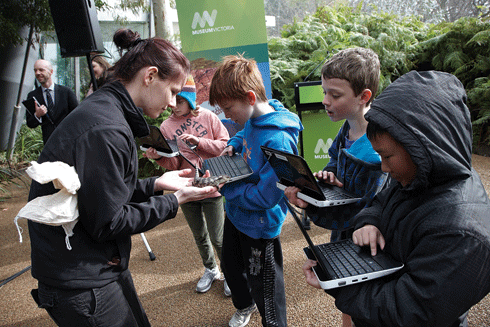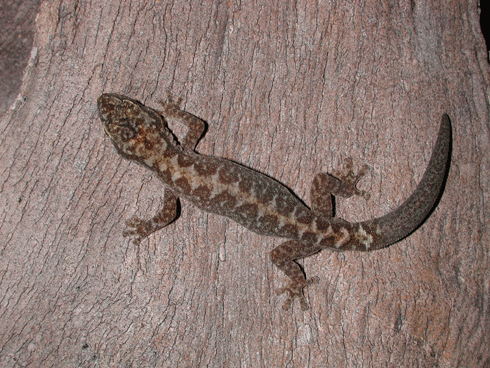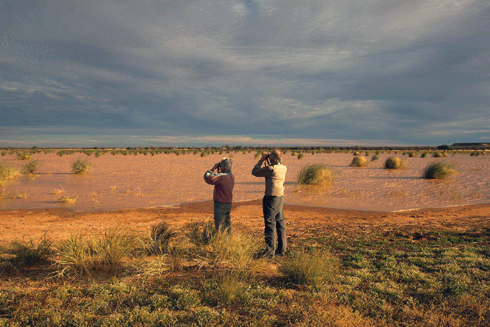
|
Published: 25 October 2010
Engaging communities to make the ‘big switch’
Stepping out on the streets of Townsville, where the sun shines for 300 days a year, you can feel a buzz in the air. But it’s not just the sunshine, booming development or new esplanade that has this North Queensland city excited.

|
| Townsville may soon have more light coloured roofs to keep out the heat as a result of residents embracing Solar Cities initiatives. |
There’s a groundswell of green activity as residents embrace ‘Townsville Solar City’ – the only Queensland city participating in the Federal Government’s Solar Cities program. Keen to create a more sustainable future, this community is participating in a range of initiatives led by Ergon Energy and Townsville City Council. These activities aim to reduce energy use, increase solar energy capacity and cut annual greenhouse gas emissions by more than 50 000 tonnes.1
It is difficult to predict how communities will embrace behaviour change. Evidence from around the world has shown that successful programs are based on strong community engagement. This in turn depends on facilitators understanding existing attitudes towards specific behaviours, including barriers and benefits to undertaking them. With this information, programs can then be developed to overcome barriers and increase benefits. This deeper community engagement can also lead to more enduring change and capacity building, which can kick-start further initiatives.2
Mr Greg Bruce, Executive Manager of Townsville City Council’s Integrated Sustainability Services, says that the effectiveness of behaviour change programs is too often limited to indicators such as the number of brochures distributed, or the number of visits to households.
‘Few go beyond just delivering information and checking whether this has been done – so where is the change?’ he says. ‘Society urgently needs effective behaviour change strategies that actually deliver results, considering the community as a dynamic, complex living system.’
Through the Solar Cities program, Townsville City Council is using several action research methods to build capacity and seek behaviour change in residential energy use. These methods include thematic communication,3 collective social learning,4 and community-based social marketing.5
One initiative – the Townsville Residential Energy Demand initiative, or ‘TRED lightly program’ for short – is focusing on behaviour change through building community capacity. Wary of second-guessing community needs, the TRED team have instead explored what is really needed through literature reviews, focus groups and surveys. Although this process has been time consuming, the initiative is producing a legacy of publicly available documents on the process and results. The TRED team hopes this will provide valuable insights for similar groups considering programs to reduce residential energy use in Australia and around the world.
Through the literature and peer review by Australian and international experts in the field, the TRED team identified 241 possible behaviours for reducing energy use in the home, from turning off standby power to turning mixer taps on in the cold position. By following the community-based social marketing method, the team has explored each behaviour to assess their likelihood of occurrence and impact in reducing energy use.
Three behaviours have subsequently been short listed for further investigation: painting the roof a white or lighter colour, using plants for shading, and swapping the household’s existing hot water system for one that consumes less fossil fuel-derived electricity.
Seventy-five residents have participated in focus groups set up to explore barriers and benefits to these behaviours. More than 1200 residents also responded to an online survey developed using the focus group results, ensuring that the findings could be generalised across Townsville.
While some of the findings confirm what the design team had anticipated before the investigation – including widespread confusion about rebates and priorities for home retrofits – a number of findings surprised the project team. For example, there was wide public acceptance that painting the roof white or a lighter colour would cool the home and reduce electricity use.
The focus group and survey findings are being used to develop the implementation program, planned to run from mid-2011. Reports on the process will be freely available through the Townsville Solar City and The Natural Edge Project websites over the coming months.
The authors are from The Natural Edge Project, an Australian ‘engineering for sustainability’ working group, hosted by Griffith University and collaborating with other universities in Australia and internationally.
1 See tinyurl.com/townsville-solar. One of these, the Magnetic Island Solar Suburb, was featured in Ecos April–May 2009.
2 Wilson C and Dowlatabadi H (2007). Models of decision making and residential energy use. Annual Review of Environment and Resources 32, 169–203.
3 Ham S (1992). Interpretation: A Practical Guide for People with Big Ideas and Small Budgets. Fulcrum/North American Press, Golden, Colorado. See www.uidaho.edu/cnr/css/samham
4 Brown V (2008). Leonardo's Vision - A Guide to Collective Thinking and Action. SENSE Publishers, Rotterdam. See http://fennerschool.anu.edu.au/people/visitors/brownv.php
5 McKenzie-Mohr D (2007). Fostering Sustainable Behaviour: An Introduction to Community-Based Social Marketing. New Society Press, Gabriola Island B.C. See www.cbsm.com/public/world.lasso





